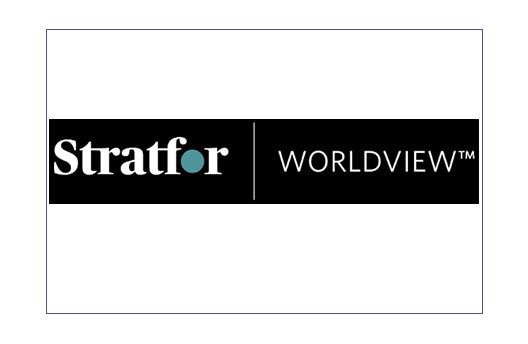The United States’ trade war with China grabs all the headlines, but U.S. President Donald Trump is also bearing down on another major Asian economy: India. In June, Trump accused the Indian government of failing to provide “equitable and reasonable market access” and stripped New Delhi of its benefits under the Generalized System of Preferences (GSP), which enables India to export certain goods at a reduced tariff rate. Indian Prime Minister Narendra Modi’s administration retaliated by slapping tariffs on 28 U.S. goods.

The Big Picture
The United States and India are nearing a partial trade deal, but the pair must iron out a number of bigger issues before they can sign a more comprehensive trade pact. For that, Washington will demand that New Delhi shrink its trade surplus, reduce the tariffs that protect India’s manufacturing and agricultural sectors and ease data localization and e-commerce policies that protect the country’s sovereignty in its growing digital economy.
Though the actions fueled speculation of an imminent U.S.-India trade war, the two sides are now reportedly negotiating a partial trade deal under which Washington will reinstate New Delhi’s GSP benefits in exchange for concessions on market access and medical devices, among other areas. The deal could come as soon as next week, as Modi is visiting the United States from Sept. 21 to Sept. 27 for the U.N. General Assembly meeting. (As part of the visit, Modi will address an Indian diaspora event on Sept. 22 in Houston, Texas, where Trump will join him on stage.) For Trump, the partial pact would allow him to claim a victory in his various trade disputes ahead of next year’s U.S. presidential election. For Modi, it would put on ice — at least temporarily — concerns that the Office of the U.S. Trade Representative (USTR) might launch a Section 301 investigation into Indian trade practices.
Such a partial deal, however, would be the easy part, for the United States and India would still have several outstanding issues to address before finalizing a more comprehensive pact. With the United States demanding that India reduce its bilateral trade surplus, open its economy to more U.S. agricultural products and go easier on U.S. technology giants, the countries remain far apart on a longer-term deal. There are three key areas to watch.
Coming Challenges
Is it realistic to expect India to significantly shrink its trade deficit with the United States? It’s very unlikely. While India increased its imports of U.S. goods from $25.7 billion in 2017 to $33.1 billion last year — buying more petroleum and precious stones — its exports increased from $48.6 billion to $54.4 billion, meaning its trade surplus only decreased from $22.9 billion to $21.3 billion. Still, India’s total bilateral surplus in goods and services fell from $31 billion in 2014 to $24.2 billion last year, although the downward trend has failed to spare it from Trump’s criticisms. In 2018, the United States and India traded $142.1 billion in goods and services (by comparison, U.S.-China trade amounted to $737.1 billion). India’s top exports in goods to the United States were precious stones, pharmaceutical products and machinery components, including parts for airplanes and automobiles. India’s main imports from the United States include precious stones, petroleum and coal, as well as machinery components that include turbojets and turbo propellers.
What concessions could India offer in a deal? If India is to regain its GSP benefits, it will likely have to offer concessions in the dairy and medical device sectors. Last year, the USTR received petitions from American representatives in these sectors over the market restrictions they face in India. The complaints triggered a review, which culminated in the USTR revoking India’s GSP benefits in June. Religious concerns shape India’s restrictions on dairy imports (New Delhi doesn’t want to import any milk from animals that feed on animal byproducts). New Delhi has also imposed price caps on coronary stents and knee implants to ensure affordability in the domestic market, prompting American exporters to claim that this hurts their competitiveness. To solve the dispute, India could accept a 2015 U.S. proposal to certify that certain grades of milk meet India’s religious requirements. At the same time, Modi could ease his retaliatory tariffs, which disproportionately hurt apple exporters from Washington state and almond exporters from California.
If India is to regain its GSP benefits, it will likely have to offer concessions in the dairy and medical device sectors.
Will India budge on tariffs, data localization and e-commerce? The United States views India’s tariffs as exorbitant. New Delhi currently applies a tariff rate of 13.8 percent even against most favored nations; unsurprisingly, the USTR views such rates as exorbitant. Nevertheless, India’s current tariffs still fall far below the maximum tariffs that it could charge, leaving room for New Delhi to ramp up tariffs significantly. Ultimately, the tariffs protect jobs in India’s manufacturing and agricultural industries, meaning New Delhi will face domestic resistance to any concessions on this front.
The United States also wants India to relax its requirements that foreign tech firms, such as Amazon, Facebook, Google and Microsoft, store data locally. New Delhi wants more control over the data generated within its boundaries, but Modi’s government could climb down in an effort to create a favorable investment climate by accommodating the demands of the tech giants, all while protecting its digital sovereignty. On e-commerce, the United States wants New Delhi to scale back regulations that prevent e-commerce platforms from selling products on their platforms in which they own a stake, complicating operations for Amazon and Flipkart, an Indian company owned by Walmart. This will require that Modi balance the needs of courting foreign capital while safeguarding the small business and trading sector, whose votes are important for Modi’s ruling Bharatiya Janata Party.
Source – worldview.stratfor





